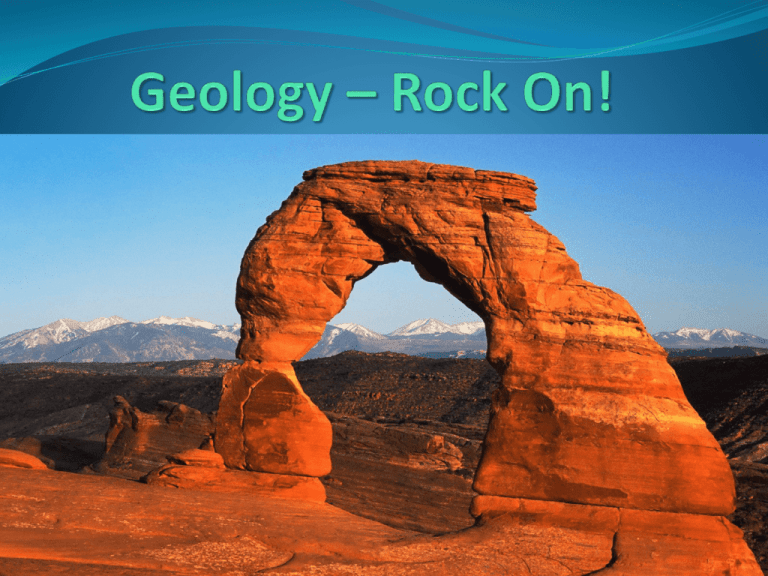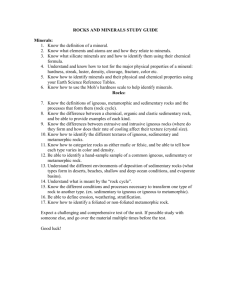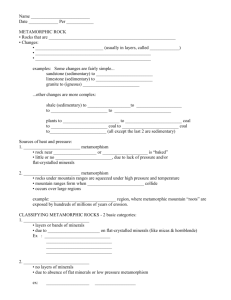EQ 15 - Geology Rock On ppt
advertisement

What is a Rock? A naturally occurring solid combination (aggregate) of one or more minerals. 3 Types of rocks: Igneous Sedimentary Metamorphic. Minerals Occurs in nature inorganically with specific chemical properties and a definite structure. There are over 4,900 known mineral species. Minerals are distinguished by physical and chemical properties. Minerals have color, luster, streak, hardness, cleavage, fracture and specific gravity (density). Mineral Shapes: Gems Gems are visually attractive and rare minerals. The brighter the gem the more desirable it is. A gem is precious or semi-precious and if cut and polished can be used for jewelry. The 4 precious gems: diamond, ruby, sapphire, emerald. Semi-precious gems: amethyst, amber (organic), pearls (from sea creatures), garnet, aquamarine, topaz, peridot, garnet, topaz, turquoise, etc. Most birthstones are gems: diamond, amethyst, sapphire, ruby, etc. $$$$$$$$$$$$$$$$$$$$$$$$$$ Three Types of Rocks: Igneous: Crystallization of magma or lava. Latin for “fire”. Sedimentary: Formed at or near the earth’s surface by an accumulation of particles (small or big). Latin for “settling”. Metamorphic: Result of igneous, sedimentary or metamorphic rocks “changing” from high heat and pressure. Greek for “change form”. Igneous Intrusive/plutonic – formed under the earth’s surface. Course grained, cools slowly, hard, crystal texture, no banding or layering Extrusive – formed above the earth’s surface. Fine grained or smooth, cools quickly, no banding or layering. Felsic – usually light in color and has high silica content with quartz. Mafic – usually dark in color and has low silica content, high in iron and magnesium. The heat from the earth comes from gravity and pressure deep underground, and also mostly from radioactive decay. Sedimentary As particles settle, pressure causes the material to become compacted or cemented. Clastic/Detrital – formed from an accumulation of fragments of pre-existing rocks and minerals. (conglomerates). Organic – formed from the action of plant and animal remains (mud rocks, coal). Chemical – nonclastic, from a saltwater or water solution that is concentrated and what is left after the liquid evaporates (limestone). Metamorphic The most complex group of rocks. Through heat, pressure, and chemical processes deep underground, the mineralogy, texture and chemical composition of the rock changes. Foliated – has layering or banding Schist has layering, ancient Greek “split”, schistose fabric, has schistosity, fissile (splitting in thin layers), mica or horneblende are aligned and elongated > 50% makeup. Gneiss (pronounced nice) has banding, mica or horneblende are aligned and elongated < 50% makeup. Non-foliated – no layering or banding (marble, quartzite). The Rock Cycle Links that Rock! http://geology.com/rocks/ http://geology.about.com/od/rocks/a/Rock- Tables.htm And for some GREAT bumper stickers……. Sources: geology.com, wikipedia, Prentice Hall Science Book, Mariam-Webster. Schist Happens!








